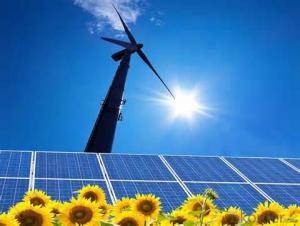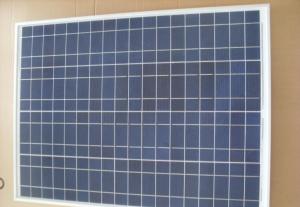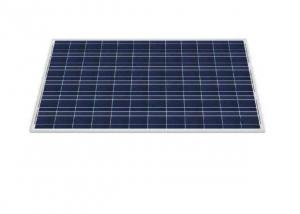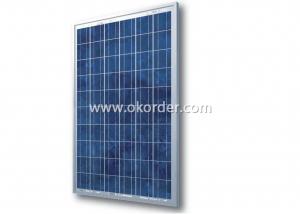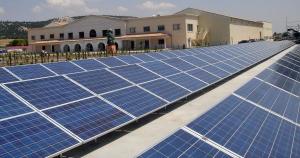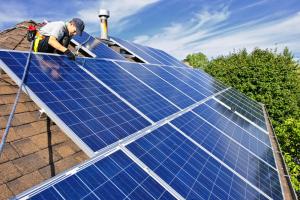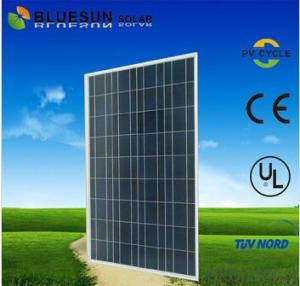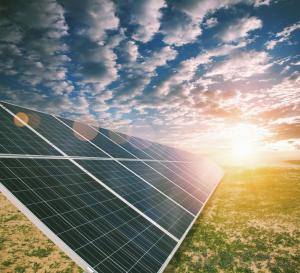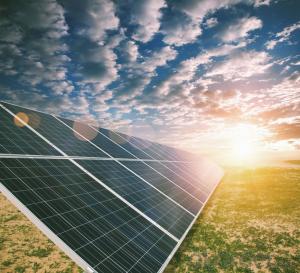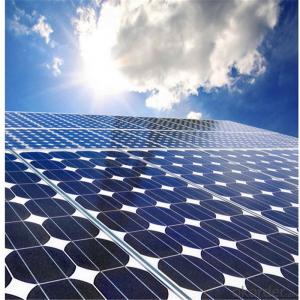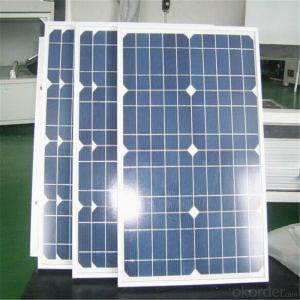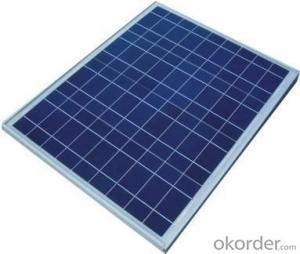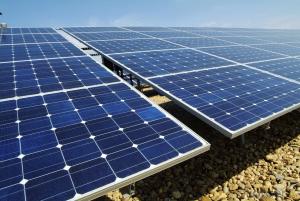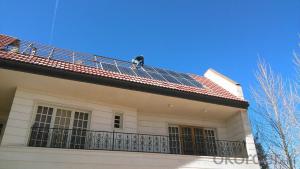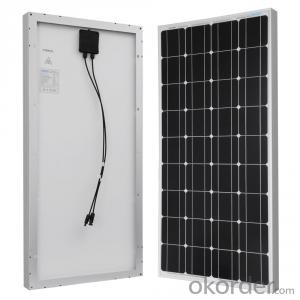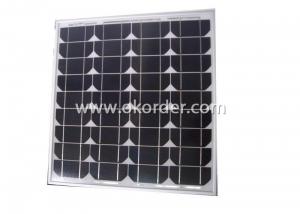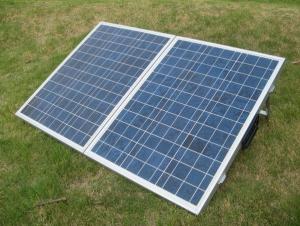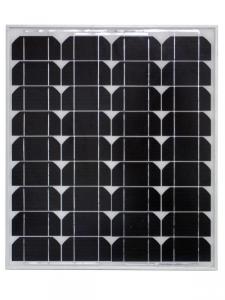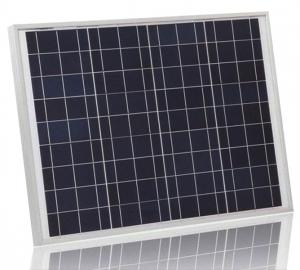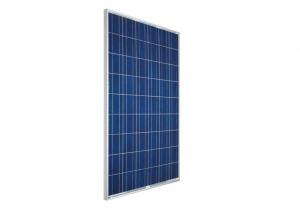180W Poly Solar Module with High Efficiency for Van Solar Panels
- Loading Port:
- Tianjin
- Payment Terms:
- TT OR LC
- Min Order Qty:
- 1 watt
- Supply Capability:
- 100000 watt/month
OKorder Service Pledge
OKorder Financial Service
You Might Also Like
Specification
Product Description:
1.Structure of Solar Module Description
CNBM Solar's photovoltaic module is designed for designed for large electrical power requirement. It is the optimal choice for both on-grid and off-grid power systems. CNBM Solar offers high performance of power per square foot of solar array.
2.Main Features of the Solar Module
Solar Cell: High efficency crystalline solar cell. Even if under the weak light, the solar module can produce maximum power output.
Tempered glass: Anti-reflecting coating and high transmission rate glass increase the power output and mechanical strength of solar module.
EVA and TPT: Using high quality EVA and TPT to prevent destroying and water.
Strong aluminum frames to strengthen the load hold and to stand against high wind.
Junction box: Multi function junction box with water proof.
Long lifetime: ≥25 years; Less power decrease.
Good performance of preventing from atrocious weather such as wind and hails.
Resisting moisture and etching effectively, not effected by geology.
The certificate issued by international authority: UL, TUV, IEC, VDE, CE.
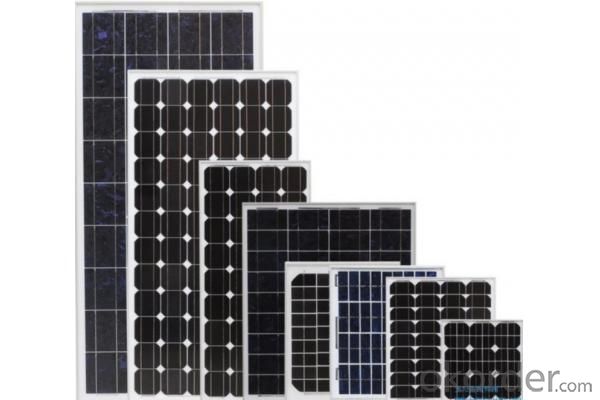
Solar panel working process
In addition to being the ultimate source of all life on earth, the sun is an infinitely renewable, completely pollution-free source of electricity. Instead of burning fossil fuels dug up from the ground in a big power plant – a very 19th century, industrial age approach, when you think about it – solar panels convert sunlight directly into electricity, with no harmful emissions.
The basic unit of a solar panel is a solar cell, which usually consists of one or two layers of silicon-based semiconductor wafers. When struck by the photons in sunlight, the solar cell generates an electrical charge due to the "photovoltaic effect" – which is a pretty good name, since it produces voltage from photons. The flow of these electrons moves in a steady electrical current from one side of the cell to the other.
Dozens of these PV cells are packaged together into solar modules, which in turn are packaged into solar panels that are mounted on a rooftop and arranged to maximize their hours of exposure to direct sunlight. Because the electricity generated by all those solar cells is direct current (DC), it is then sent to an inverter that transforms the power into the same alternating current (AC) used by the appliances in your home and the local utility electricity distribution grid. Increasingly, these inverters are getting "smart," providing data monitoring for solar installation performance and other grid integration services.
- Q: Can solar panels be installed on a boat?
- Yes, solar panels can be installed on a boat. In fact, it is a popular and efficient way to generate electricity for various onboard systems, such as lighting, navigation, and charging batteries. Solar panels are lightweight, durable, and can be easily mounted on the deck or roof of a boat to harness solar energy and contribute to a more sustainable boating experience.
- Q: We are considering getting solar panels for our home just south of Birmingham, AL. We know a little and are trying to educate ourselves the best we can. But we are having a hard time finding anyone around this area. We have done the yellow page thing, and some quot;green places around town. But to no luck.....
- Any electrical contractor could likely install them, and there are several Internet businesses that sell solar panels. You likely have no place there to get the kind of large panels you need for a house. Look at your local regulations. Your utility may not allow grid-tie, so you may have to set up an off-grid system with batteries and use separate wiring or a transfer switch. One thing a lot of people neglect is hail protection. In Birmingham, you're likely to have large hail (larger than golf ball size) every couple of years in the spring. You need to work out a way of covering them in advance of severe weather. Most panels will take up to golf-ball size hail with no problem. DK PS, I've done this myself, and have considerably more information. Email if you're interested.
- Q: I have seen DIY software which explains everything for novices. Specifically, how to build your own solar panels and tie them into your home electrical system for about $00 in parts.Has anyone tried doing this? Was it easy?
- Solar power generation is still in its infancy. Solar panels are incredibly expensive (average of approx $25,000 to equip a house with roof top panels) and are incredibly inefficient. However, the economics and efficiency of solar electricity may evolve into a system of economic, efficient collection systems in time depending on the level of funding available in the future for the necessary research and development. We can only hope.
- Q: Which of these units determines how much electric energy a solar panel can generate?
- Light is power in the form of electromagnetic radiation from the sun. We receive about 000 watts per square meter on a sunny day. The solar panels do convert that sunlight into electrical power at a little less than 25% efficiency. Light intensity and power per square meter (W/m^2) are closely related. The more intensity, the more watts per square meter. So the answer is : Yes, from light intensity which directly proportional to watts per square meter
- Q: Can solar panels be installed on wearable devices?
- Yes, solar panels can be installed on wearable devices. However, due to the limited surface area available on wearables, the amount of energy generated may be relatively low compared to larger solar installations. Additionally, the efficiency of such panels may vary based on the device's orientation to the sun. Nonetheless, incorporating solar panels on wearables can contribute to extending battery life and enhancing their overall sustainability.
- Q: are solar panels just a photodiode?A Photodiode converts light into either current or voltage? Right?
- yes. Any semiconductor junction will convert light into electrical energy, just shine a light at an LED (connect LED to voltmeter) and you'll see a small voltage produced (if you configure the meter as an ammeter it will develop a very small current). Solar panels are just VERY large surface photodiodes.
- Q: Ok so I am planning on buying a solar panel. I am doing it to possibly sell the energy that it stores. It is a 20 watt panel so I am just wondering if every week or month if I sold that energy that it stored would make me a good profit. I am not hoping for thousands of dollars a month..just like 00? The solar panel cost me $,00 so if so, how long do you think it would take to make good profit. Also, how much would I make every week or month?
- I will give you the tools to answer your own question. Here is the solar resource map: rredc.nrel /solar/old_data/nsr... Use it to look up the hours of peak equivalent sunlight per day in your area. For example, let's say it's 5 hours / day. Then per year you get 365 x 5 = 825 hours of sun Your panel is 20 watts, or 0.2 kW So the energy produced per year is 825 x .2 = 383 kWh You'll have to use the proper numbers for your own area, of course. Anyway, you can take that 383 kWh and determine how much it would cost at local electric rates. Never know, on some islands, it's $.00 per kWh. Check with your local electric company for rates.
- Q: How do solar panels withstand harsh weather conditions?
- Solar panels are designed to withstand harsh weather conditions through their durable construction materials and protective features. The panels are made with tempered glass that can handle hail, heavy rain, and snow without getting damaged. The frames are typically made of strong aluminum or stainless steel to provide stability and resistance against strong winds. Additionally, advanced solar panels have built-in drainage systems to prevent water accumulation and snow shedding technology to remove snow buildup. These design elements enable solar panels to endure and continue generating electricity even under challenging weather conditions.
- Q: Can solar panels be installed on a tennis court or sports complex?
- Yes, solar panels can be installed on a tennis court or sports complex. These areas often have large open spaces with ample sunlight, making them ideal for solar panel installations. Additionally, integrating solar panels into sports facilities can help offset energy costs and promote sustainability.
- Q: Where can I buy solar panels other than online in Charlotte, NC?
- Do a web search for solar panels Charlotte NC.
Send your message to us
180W Poly Solar Module with High Efficiency for Van Solar Panels
- Loading Port:
- Tianjin
- Payment Terms:
- TT OR LC
- Min Order Qty:
- 1 watt
- Supply Capability:
- 100000 watt/month
OKorder Service Pledge
OKorder Financial Service
Similar products
Hot products
Hot Searches
Related keywords
